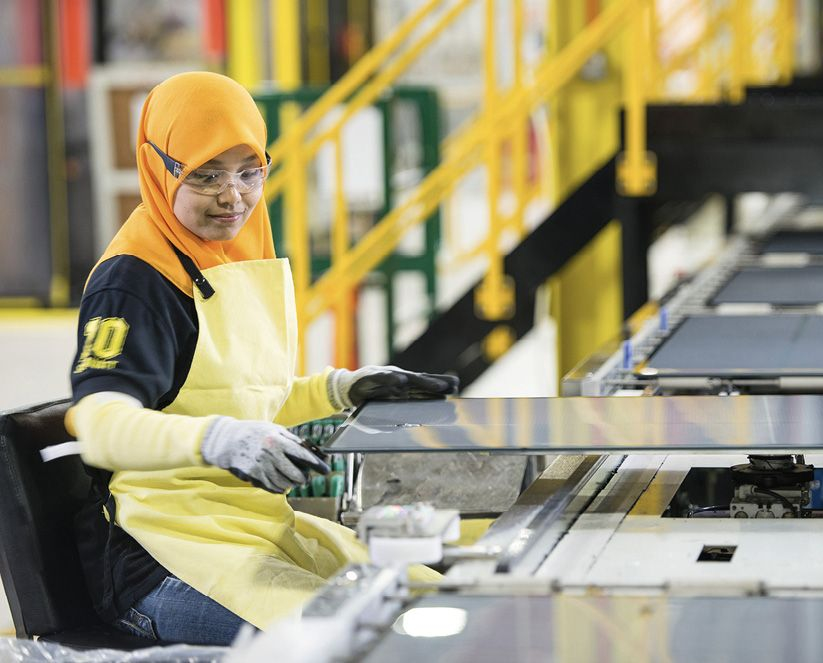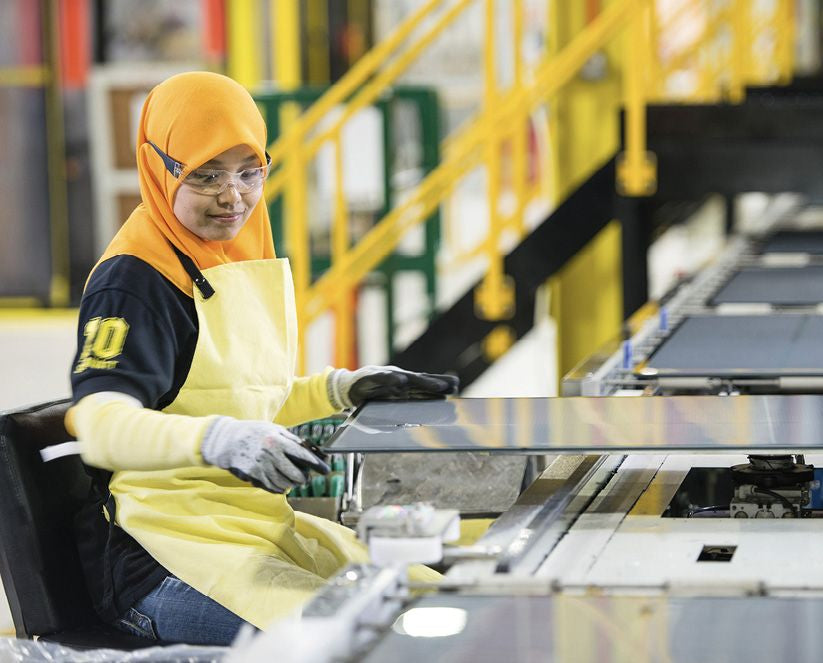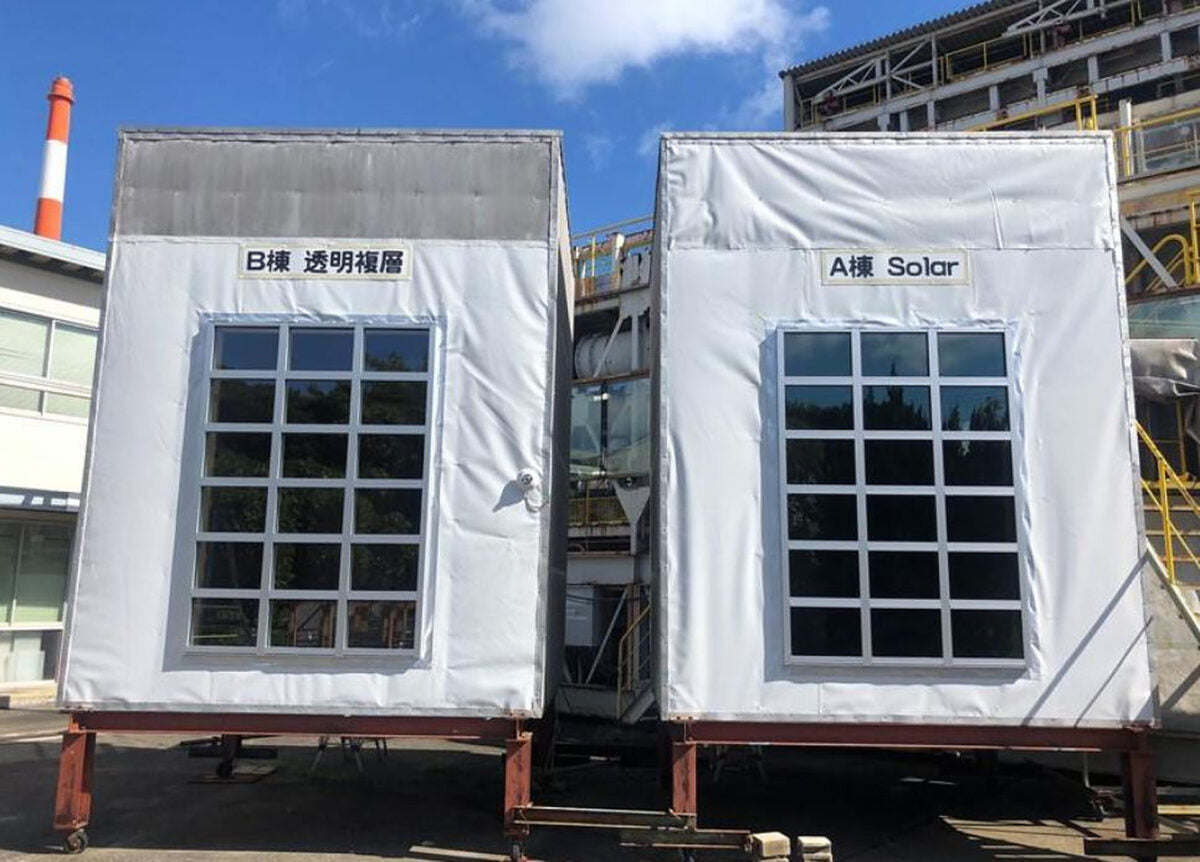https://www.pv-magazine.com/2023/04/29/weekend-read-new-turf-for-thin-films/
New turf for thin films

First Solar’s new 3.3 GW manufacturing facility in India should be operational by mid-2023.
First Solar
Thin-film solar has long promised a big future but the technology has been slow to scale. Recent innovation and applications, however, hint at a larger space in the market opening up.
Long-time thin-film producer First Solar’s cadmium telluride (CdTe) technology is currently on a path to silicon PV-style scale, thanks to the US Inflation Reduction Act (IRA) and the construction of a 3.3 GW-per-year manufacturing facility in India. US-based First Solar had moved away from India due to competition from Chinese rivals but has been invited back thanks to the nation’s industrialization plans and the global trend of onshore PV production.
First Solar and Indian research institute IIT Madras (IITM) Research Park agreed, in February, to collaborate on R&D, with a particular focus on thin-film.
Professor Ashok Jhunjhunwala, IITM incubation cell professor and president of the research park, tells pv magazine he visited the United States in 2017 to persuade First Solar to return to India.
“They did not seem interested,” he says. “I was very keen to get them here and for a very simple reason – you can’t let one country dominate a very important technology.”
With India’s industrialization set to mimic China’s, it needs energy. “In India itself, you will see 1,000 GW of solar some day – that’s a kind of technology we may require,” says Jhunjhunwala.
Silicon PV “requires immense alignment of solar rays,” Jhunjhunwala continues, highlighting CdTe’s advantages in India. The technology works better in the morning and late evening and in high temperatures and humidity. “It’s a very cost effective … technology,” adds the professor.
Fabric PV
Thin-film researchers are working on innovations to enable solar integration everywhere. Massachusetts Institute of Technology (MIT) researchers recently announced a scalable fabrication technique for ultra-thin, lightweight solar cells that can be integrated onto any surface, for example.
The academics decoupled the manufacturing from the integration of solar cells, demonstrated by adhering a printed module to strong, fibrous, Kevlar-like fabric Dyneema. Printing cells directly on fabrics limits them to materials chemically and thermally compatible with thin film processing steps and “decouples the solar cell manufacturing from its final integration,” the academics said.
MIT Research Scientist Jeremiah Mwaura tells pv magazine that the aim is to “ease the manufacturing process to seamlessly integrate PV with fabrics as substrates – ‘fabric PV.’” By decoupling the manufacturing from the integration, it is easier to scale by leveraging “the same roll-to-roll tools and carrier substrates typically used for solution processing of large-area printed electronics.”
The endless applications for printable, prefabricated thin-film solar range from traditional rooftop installations to the emerging demand for additive power generation on products such as sails, tents, and awnings. But these will remain unrealized without large scale production.
“Many roof spaces require reinforcement to support the weight of traditional PV modules,” says Mwaura. “Imagine you have a technology that cuts the weight by orders of magnitude, suddenly a lot more deployment opportunities open up.”
Ease of deployment would revolutionize the industry. If PV were transported in rolls like paper or fabric, cost reductions would be considerable, barriers to adoption lowered, and panel fragility would be a thing of the past.
Popular content
“While these thin film, lightweight solar cells currently have a lower efficiency than traditional silicon cells, they have the potential to excel in applications such as rapid deployment in disaster response, and remote military operations where the specific power (amount of electricity produced), rather than highest efficiency, is mission critical,” Mwaura adds.
MIT-bred startup Active Surfaces has an eye on commercialization. With plans to commission a 50 MW production line before 2027, founder and chief technology officer Richard Swartwout believes the solar revolution is warming up.
“We tend to think of the solar market as being completely capitalized,” said Swartwout. “But the reality is that, from a US deployment perspective, only 2% of buildings have solar on them. And … utility scale is only generating, at peak power in the summer, something like 3% to 5% of demand so we have quite a long way to go.”
Active Surfaces estimates only 30% of US commercial assets can host today’s PV. Unsuitable surfaces include not only low-load commercial rooftops but also the membrane roofing common in New England, not to mention roofs whose wind-load requires cost-intensive anchoring systems.
Backing
With even fewer rooftops in the developing world able to accommodate heavy, glass-encased PV, the GridEdge program at MIT attracted funding from Tata Trusts, the philanthropic arm of India’s Tata Power, to develop a scalable solar cell and module infrastructure for developing nations.
“For a lot of villages in rural India, the kind of structural support needed for PV doesn’t really exist,” says Swartwout. “Another problem is transport – we had some reports that upwards of 20% to 30% of panels transported to rural areas either fully crack or suffer long-term degradation as a result of microcracking.
“These are some of the motivating factors for looking into an alternative deployment scheme. Flexible technologies (both organic PV and perovskites) are mechanically more stable. We did a calculation that by using rolls of PV you could use a U-Haul to transport up to 1 MW of nominal power. That means that … a single small truckload of thin-film solar rolls to a remote village would have the potential to power the whole area.”
Active Surfaces will leverage IRA incentives which make US manufacturing “very favorable,” says Swartwout, who hopes MIT’s solution can be transferred to tailored roll-to-roll tools within two years. “We’re a roll-to-roll printing company but we’re not going to a fully-printed stack,” he says. “That’s where a lot of others lost their way. A thin-film flexible solar cell like the one we have is the most optimized commodity of any solar technology because you can always laminate it flat and rigid but you can never go the other direction.”
Scaling would represent a breakthrough for solar segments including building- and vehicle-integrated PV, which often feature curved facades. “It’s certainly an interesting time,” says Swartwout. “You would not have had this motivation to build out thin-film 10 years ago.”
New leaf
University of Cambridge researchers have developed a solar-powered “artificial leaf” to generate clean fuels, including hydrogen, with simple ingredients. Researcher Virgil Andrei says photosynthesis influenced the design of the ultra-thin, flexible devices.
The tandem device mimics plants by “using two light absorbers and two catalysts in order to perform different types of chemistry,” says Andrei. “For example, we can have oxygen evolution on one side and hydrogen evolution or CO2 reduction to syngas or other carbon products on the other side. The benefit of our latest work was that we managed to deposit these light absorbers on thin substrates. This provides economic advantages because you can reduce the cost of the whole device, and we also saw new types of functionality.”
The device is so light, says Andrei, “that the bubbles being produced will actually float your leaf to the water’s surface to create what we call ‘an artificial lotus leaf,’” opening new spaces for fuel production.
The artificial leaf is compatible with large-scale production techniques including roll-to-roll deposition. “We wanted to make a technology that can use simple building blocks like water or CO2 to make fuels,” adds Andrei. The process’ carbon neutrality could help decarbonize industrial liquid fuel production by petrochemical companies.
This content is protected by copyright and may not be reused. If you want to cooperate with us and would like to reuse some of our content, please contact: editors@pv-magazine.com.




